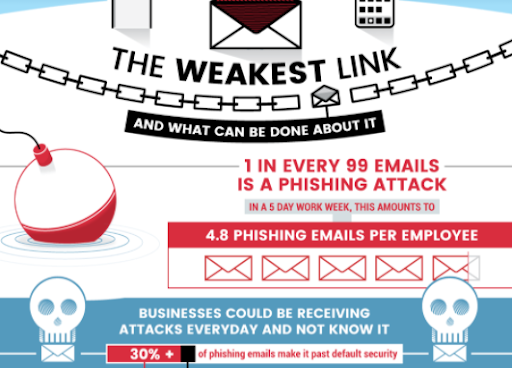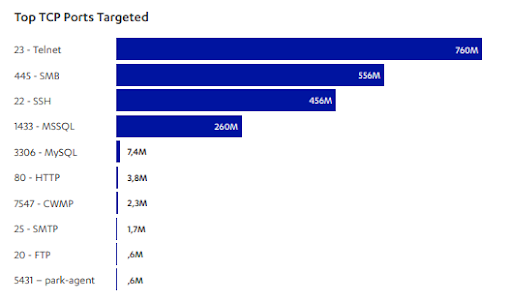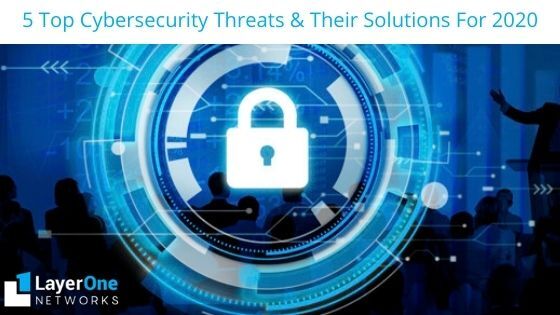The technology is improving. The reach of the internet is improving. And so are the cybersecurity threats.
With our whole lives revolving around the internet, we cannot ignore the fact that cybersecurity threats are rising. As our world adjusts to life during the COVID-19 pandemic, we cannot ignore those trying to profit from this situation even as they affect so many businesses and individuals.
Cyberattacks are everywhere, from the personal computers of 60-year-olds to the computers in multinational organizations. As much as we are happy for the technology to develop so much, it has, in a way, contributed to the increased cyber threats.
So how can we protect ourselves against cybersecurity risks?
The best way is to identify cybersecurity threats and implement high-security protocols and tools to keep us protected.
The Main 5 Cybersecurity Threats You Need to Look Out for in 2020 [With Solutions]
Cybersecurity has been a part of the world for over 30 years now. And it doesn’t seem to dial down yet. Many companies are offering specialized IT security services to protect your data. Before you hire one, it’s essential to know how you can be attacked and what you need to do to safeguard yourself.
This is where our experts offering data security service in Corpus Christi comes in. Our data security experts at LayerOne Networks have helped many companies to protect their data against data breaches. From our experience, we have created a list of common cybersecurity threats we’ve come across.
-
1. Phishing Attacks
Phishing is one of the most common forms of cyberattacks we’ve witnessed. Hackers create digital messages that are enticing to fool people into installing malware or stealing the data.
A working employee gets hundreds of emails in a month and phishing attacks take advantage of this volume to enter during vulnerable times.

1 in every 99 emails is a phishing attack, which means an employee gets 4.8 phishing emails in a 5-day work week. Even with basic data security solutions, even if 10% of these escapes the scan, there are high chances for the malware to do its work.
How can you prevent phishing attacks?
- Provide training to the employees about identifying the emails that are fake vs. real.
- Conduct regular awareness campaigns for the employees to stay cautious of suspicious emails that address generically. Advice the employees against checking twice before giving any information.
- Install anti-phishing tools on the computers and use customized anti-phishing IT security services to detect such emails.
-
2. Ransomware
Ransomware quickly rose to one of the popular cybersecurity threats two years ago. No one was spared. However, there’s been a decline in ransomware threats since the past year, at least among individuals.
Big corporations are targeted more with ransomware than individuals because of what’s at stake for them. Also, some companies have yielded to pay the ransom amount with their good revenue and do away with the problem.
How can you prevent ransomware attacks?
- Use robust firewalls and perimeter security to prevent malware from entering your computers.
- Keep your software and hardware updated as the outdated applications are the gateway for the ransomware attacks.
- Disable options that run without click, through Java or Flash.
-
3. Cloud Security Threats
With most of the employees working from home, the best way to work seamlessly is through a cloud platform. However, working with cloud exposes to so many cybersecurity threats like:
- Misconfiguration
- Insider threats
- Account hijacking
- Insecure interfaces
- DDoS attacks
Since the home network doesn’t have strong network security like the one in offices, the data breaches can be even more.
What’s the best way to enforce complete cloud security?
- Improve the level of control and authentication to access sensitive information.
- Invest in good online network security tools for the employees to work from home.
- If possible, provide a highly secure laptop with all the security features installed.
-
4. IoT-Based Attacks
Many of us are getting used to IoT devices. From IoT speakers to toothbrushes, the number of smart devices connected to our network is increasing. And the cybersecurity threats are growing along with it.
In an F-Secure report released in 2019, Telnet is the number one port targeted in the cyber attacks. Telnets are now rarely used outside of the IoT devices, which shows how much the IoT devices are making us vulnerable.

How can you prevent IoT attacks?
- Keep the firmware of all your IoT devices up-to-date.
- Take account of the different IoT devices you have and run updates on them regularly.
- Try to keep the IoT devices to a minimum so that you can keep an eye on them.
-
5. Credential Stuffing
Hackers can steal the login credentials of your employees and use the information to access sensitive information.
Most often, hackers use cloning sites or applications to trick the employees into giving in their login information, which they’ll use as access. Many companies have been victims of this attack as even the most cautious employees don’t think twice before entering the username and password, like they do numerous times a day.
How can you prevent credential stuffing?
- Implement 2FA authentication that gives an extra layer of protection.
- Encourage the employees to use different passwords for different applications and the same has to be implemented for common platforms. This way, even if the hackers gain access to one, at least the others will be protected.
- Encourage your employees to never write down their password or share it with any others.
Are you feeling wary of the numerous IT security threats out there?
You should be! With the possibility of security threats increasing, it’s crucial to take it seriously and get a good data security provider to enforce top-notch features.
LayerOne Networks is a specialized company for data security service in Corpus Christi. Talk to our experts to know more about how you can avoid data breaches.

